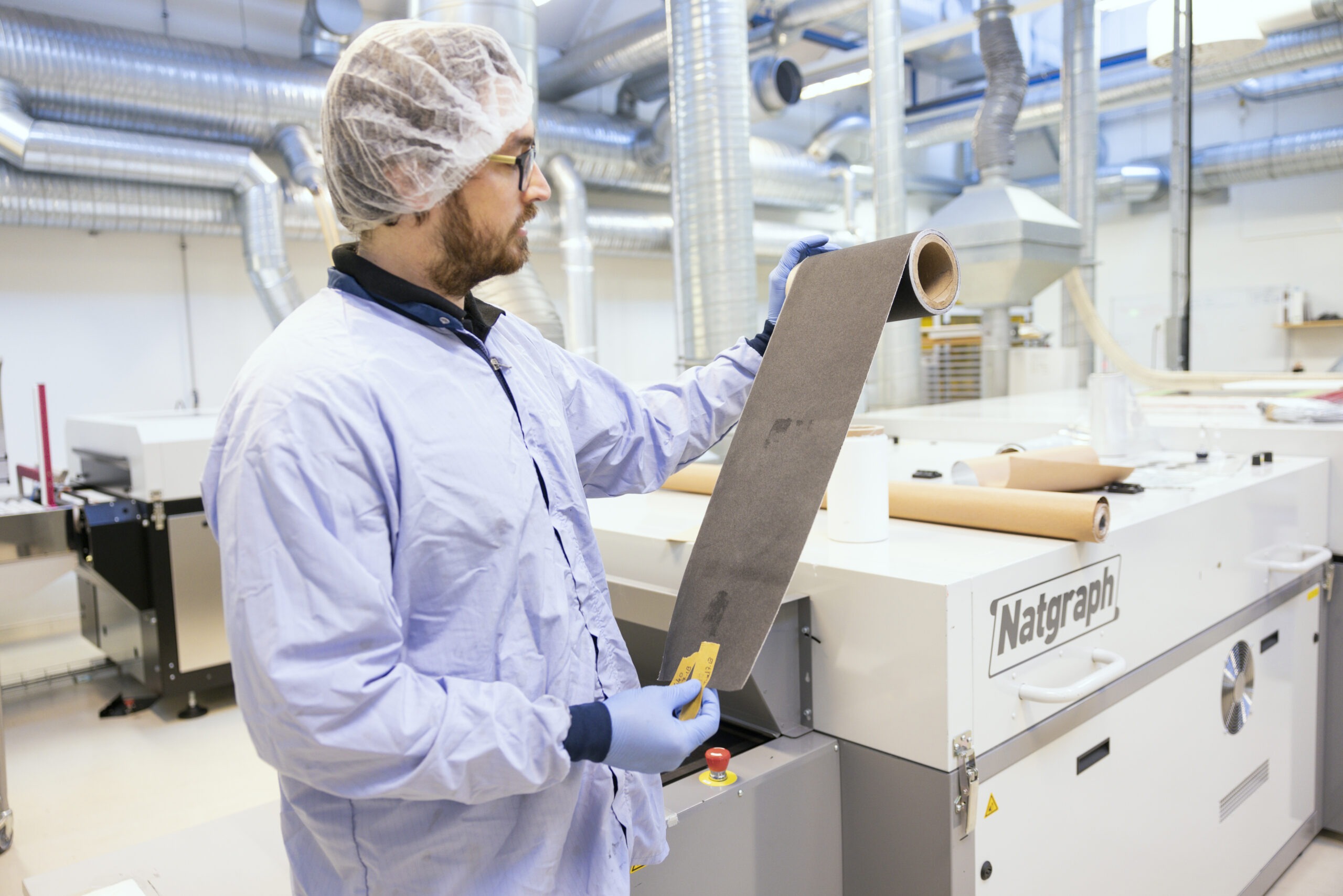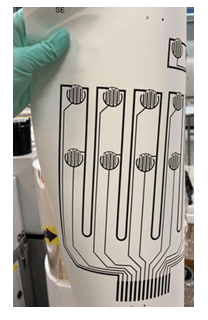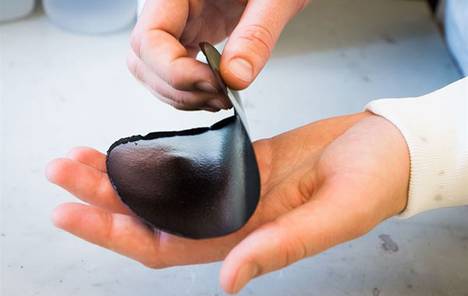Energy Storage and Harvesting
Energy is one of the most important commodities. As the world transitions from a fossil based energy economy towards renewable energy, like wind and solar power, the need for energy storage technologies that are efficient, safe, inexpensive and easily produced is becoming increasingly important. Energy storage devices made with printed electronics are cost-effective, flexible, lightweight, and environmentally friendly. They can be produced at scale, integrated into various form factors, and used in portable electronics, electric vehicles, and renewable energy systems. Their adoption can contribute to a more sustainable and efficient society. At RISE Printed Electronics, we have develop new materials and device concepts for energy storage, such as paper-based supercapacitors, thin and flexible batteries, and bio-based membranes for fuel cells.
On the other hand, energy harvesting is important when considering IoT devices which often require small amounts of energy but for long periods of time, where batteries or supercapacitors are not ideal. By using energy harvesting technologies like radio frequency harvesting, pizeoelectrics or triboelectric generators, such electronic systems can be made energy autonomous.
Contact:
Jesper Edberg
Mats Sandberg
Subimal Majee

Pilot production of roll-to-roll Energy Storage Materials
Within the Digital Cellulose Center RISE researchers, together with their partners, up-scaled their previous work on energy storage paper materials into roll-to-roll manufacturing producing several rolls of paper reinforced energy material.
This development has been published under the title: Production of an energy-storage electrode paper using a pilot-scale paper machine and can be read here.
Visit the Digital Cellulose Center website here.

Using Triboelectricity to harvest energy is a relatively new development and one that researchers at the printed electronics arena are researching.
RISE researchers have recently published an article where triboelectricity is generated with sustainable materials titled: A Paper-Based Triboelectric Touch Interface: Toward Fully Green and Recyclable Internet of Things.
You can read the full article here.

What began as a Friday experiment has grown into a research field in itself: Combining cellulose derivatives with PEDOT:PSS.
As the name suggests, Power Paper is a paper based material that conducts and can even store electrical energy. This invention has resulted in many publications and research grants by RISE researchers and others.
The original recipe for the Power Paper has since been optimized for free standing substrates, spray coating and screen printing to develop many different forms of energy storage devices.
The original publication can be read here.

In an attempt to showcase the ability to upscale the research on sustainable energy storage materials, RISE researchers have produced paper-based supercapacitors on a larger scale. With modifications to the design, the paper supercapacitors can now be produced in A3 size to store over 125 Farads per device.
The research has been published with the title: Large-scale paper supercapacitors on demand and can be read here.

